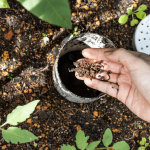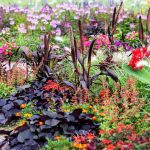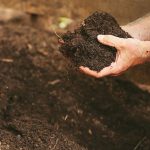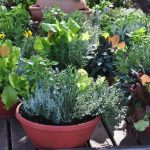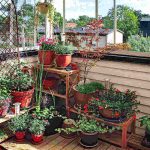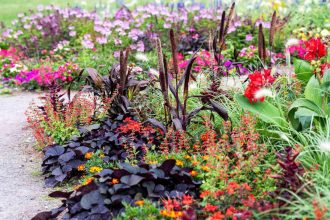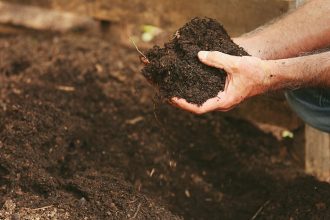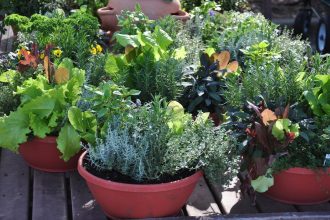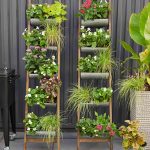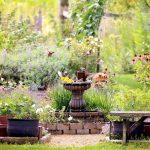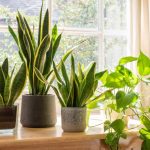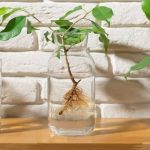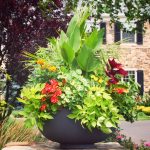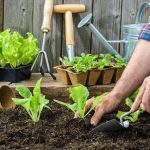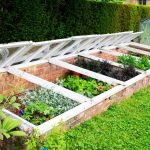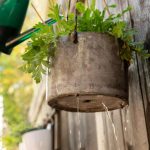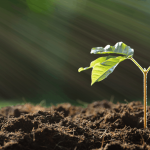In the colorful world of indoor gardening, choosing the right containers for your botanical beauties is essential to their growth and overall aesthetic appeal. From sleek ceramic pots to whimsical hanging baskets, the options are endless – but fear not, for we are here to guide you through the process of finding the perfect homes for your green companions. Join us as we delve into the world of container choices and unearth the secrets to creating a thriving indoor garden that will surely make your space bloom with life.

Selecting the Ideal Size and Shape
When it comes to for your indoor garden containers, there are several factors to consider. The size of the container will depend on the type of plant you are looking to grow and the space available in your home. Larger plants will require larger containers to allow for proper root growth and stability, while smaller plants can thrive in smaller containers.
Shape is also important when choosing the right container for your indoor garden. Some plants, such as trailing vines, may benefit from hanging baskets or tall, narrow containers to allow for vertical growth. Other plants, like herbs or succulents, may do well in shallow, wide containers that provide ample room for spreading out their roots.
Consider the aesthetic appeal of the containers as well. Choose shapes and sizes that complement the style of your home and create a cohesive look for your indoor garden. Whether you prefer sleek, modern pots or rustic, terracotta planters, there are endless options to suit your personal taste.
Considering Drainage and Watering Needs
When selecting containers for your indoor garden, it is important to consider the drainage and watering needs of your plants. Proper drainage is essential to prevent waterlogged soil, which can lead to root rot and other issues. Here are a few tips to help you choose the right containers:
- Drainage Holes: Look for pots with drainage holes in the bottom to allow excess water to escape. If your favorite container doesn’t have holes, you can always drill some yourself.
- Saucers: Use saucers under your pots to catch excess water and prevent damage to your furniture or floors.
- Self-Watering Pots: Consider using self-watering pots, which have a reservoir that holds excess water and allows the plant to absorb moisture as needed.
Additionally, it is important to water your indoor plants properly. Overwatering can be just as harmful as underwatering, so be sure to check the moisture level of the soil before watering. Different plants have different watering needs, so do some research to determine the best watering schedule for each type of plant in your indoor garden.
Exploring Material Options
When it comes to choosing containers for your indoor garden, the material options are endless. Each material has its own unique characteristics and benefits. Here are some popular material options to consider:
- Terra Cotta: Terra cotta pots are a classic choice for indoor gardens. They are porous and allow for air circulation, promoting healthy root growth.
- Ceramic: Ceramic pots come in a variety of colors and designs, adding a decorative touch to your indoor garden. They are also durable and retain moisture well.
- Plastic: Plastic containers are lightweight and affordable. They come in various sizes and colors, making them a versatile option for any indoor garden.
- Wood: Wooden planters add a rustic charm to your indoor space. They are great for herbs and smaller plants, but may require a liner to prevent rot.
Consider the watering needs of your plants when choosing a container material. Terra cotta and ceramic pots retain moisture well, while plastic and wood containers may dry out more quickly. Choose a material that complements your plant’s needs and fits your interior design aesthetic.
Matching Containers to Plant Varieties
When it comes to creating an indoor garden, the type of container you choose can have a big impact on the health and growth of your plants. Different plant varieties have different needs, so it’s important to match the right container to each one to ensure they thrive. Here are some tips for choosing the right containers for your indoor garden:
- Succulents: These plants do well in containers with drainage holes to prevent root rot. Terra cotta pots are a popular choice for succulents because they are porous and allow excess moisture to evaporate.
- Herbs: Herbs like basil and mint thrive in shallow containers that allow for good airflow. Look for containers that are at least 6 inches deep and have good drainage to prevent overwatering.
- Leafy greens: Plants like lettuce and spinach do well in wider, shallow containers that allow their roots to spread out. Look for containers that are at least 12 inches wide and have good drainage.
When choosing containers for your indoor garden, it’s also important to consider the material they are made from. Plastic containers are lightweight and come in a variety of sizes, but they can retain moisture and may need more frequent watering. Ceramic containers are sturdy and come in a range of styles, but they can be heavy and breakable. Ultimately, the best container for your indoor garden will depend on the specific needs of the plants you are growing.
In conclusion, selecting the perfect containers for your indoor garden is essential for the health and growth of your plants. Whether you opt for traditional terra cotta pots, hanging baskets, or unique repurposed containers, the key is to consider the needs of your plants and the aesthetics of your space. By choosing containers that provide adequate drainage, sufficient space for root growth, and a style that complements your décor, you can create a thriving and beautiful indoor garden that brings joy and tranquility to your home. So go ahead, get creative and let your green thumb flourish!


